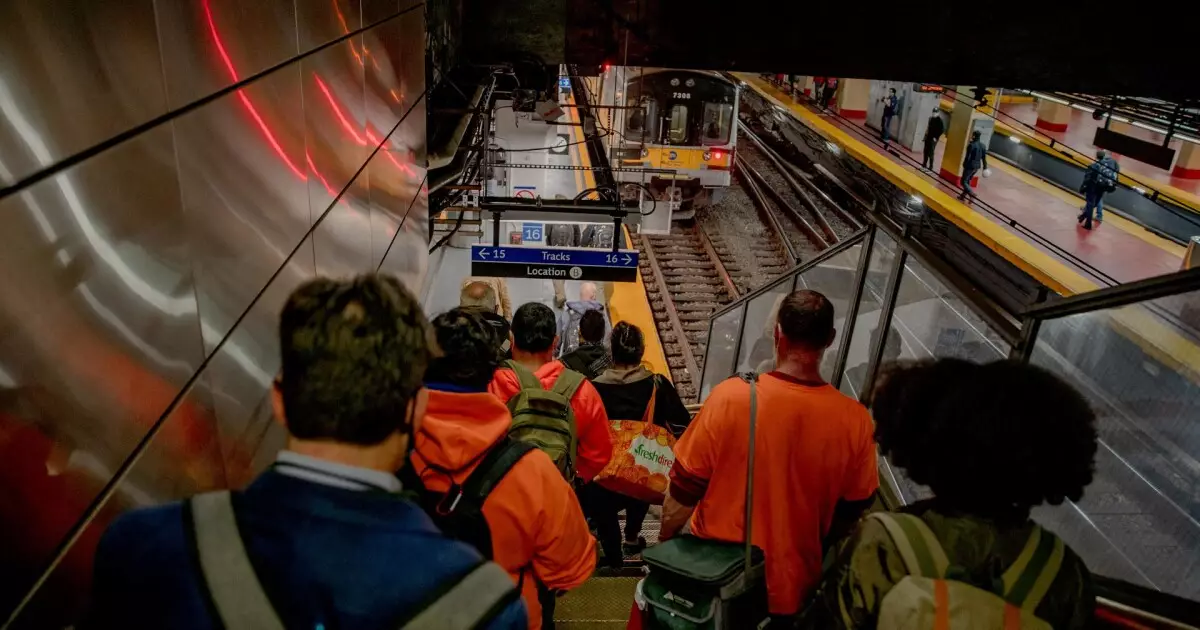The Trump administration’s recent maneuver to commandeer the long-anticipated $7 billion renovation of New York’s Pennsylvania Station is both timely and contentious. By dismissing the Metropolitan Transportation Authority (MTA) as the lead on this project and repositioning Amtrak at the forefront, Secretary of Transportation Sean Duffy is inserting a new dynamic into the debate over urban infrastructure. This decision, fraught with political undertones, promises both excitement and apprehension for New Yorkers who have long awaited a transformation of this critical transport hub.
While one may argue about the merits of executive meddling, from a conservative standpoint, one can affirm that the current MTA has been plagued by inefficiency. Under the previous leadership, the agency has had its fair share of fiscal scandals and mismanagement. Duffy’s announcement that a federal grant to Amtrak would be reduced by $120 million is more than just a budget cut; it symbolizes an attempt to instigate accountability, rejecting the culture of unlimited spending that has characterized New York’s public transportation systems for too long.
Political Treachery or Pragmatic Governance?
Governor Kathy Hochul’s effusive praise of this new arrangement highlights the stark dichotomy in political attitudes surrounding the project. From Hochul’s position, the Trump administration’s move is a “major victory” for New Yorkers, potentially unlocking federal funds that could offset the bill that would otherwise fall squarely on state taxpayers’ shoulders. However, one must question whether this is a genuine gesture of goodwill or a strategic move in the ongoing battle between state and federal authorities over transport policy.
Indeed, with increasing polarization between the Trump administration and local governance, the focus shifts to the lingering tensions surrounding congestion pricing. Despite a looming April deadline set by the administration, MTA leaders have hinted at their unwillingness to comply, which shoots another arrow into the chest of collaborative federal-state relations. Contradictory visions for the future of New York’s transit infrastructure underscore the complexities of large-scale projects that straddle partisan lines.
Artistry Meets Functionality
Looking beyond the political sphere and focusing on the architectural ambitions underpinning the reimagined Penn Station, one can glean a sense of hope. The vision to replace the current transit hub with a 250,000 square-foot single-level facility, adorned with modern amenities and incorporating mixed-income housing, presents a paradigm shift in how public spaces can serve city residents. The prior designs may have kept transit efficiency at the forefront, but they lacked any semblance of aesthetic or community value.
Here, the new proposal taps into a growing trend among urban planners to integrate residential spaces within transport hubs. In a city where the real estate market is as frenetic as the daily commuters, this new blueprint redefines the interaction between work, transportation, and living. One cannot emphasize enough how significant it is to have transit stations that do more than merely serve their functional purpose—they should also breathe life into the communities they anchor.
Anticipating a Future Built on Accountability
The shift to Amtrak also raises another pivotal question: Will they demonstrate a higher capacity for effective governance than the MTA? The dangers of further bureaucratic bloat loom large. President Trump’s sentiment that “the days of reckless spending and blank checks are over” is not merely rhetoric. It speaks to a need for a stringent outlook on public expenditure. As taxpayers, New Yorkers can no longer afford the complacency that has allowed the MTA’s inefficiencies to fester without scrutiny.
In a letter to MTA’s CEO Janno Lieber, the Federal Railroad Administration underscored the decision to consolidate oversight under Amtrak, aiming for a streamlined completion of the Penn Station overhaul. While Lieber reflects on the MTA’s recent successes, one must remain skeptical about the sustainability of these achievements against a backdrop of potential stubbornness surrounding the shift in governance.
Balancing Innovation with Tradition
While the overhaul of Penn Station promises to be transformative, the very risks associated with large-scale federal projects cannot be overlooked. It is essential to maintain a level of conservative oversight throughout the execution of government-funded initiatives to ensure that tax dollars serve their intended purpose.
One must ask, will this project culminate in a transit center that not only meets the logistical challenges but also embraces the city’s historical legacy? Stripping the MTA from its control might improve accountability, but it must also take into account the layers of history ingrained in such landmarks. As New Yorkers, it is our responsibility to hold these ambitious plans to the highest standard, ensuring they not only reflect modern needs but also honor the city’s rich tradition in public transportation.
In the end, the ongoing saga following this political tennis match surrounding Penn Station reflects broader currents of governance and ideology in America. Ultimately, the potential transformation serves as an essential litmus test for whether a more efficient, accountable, and aesthetically pleasing New York City is within our grasp.

